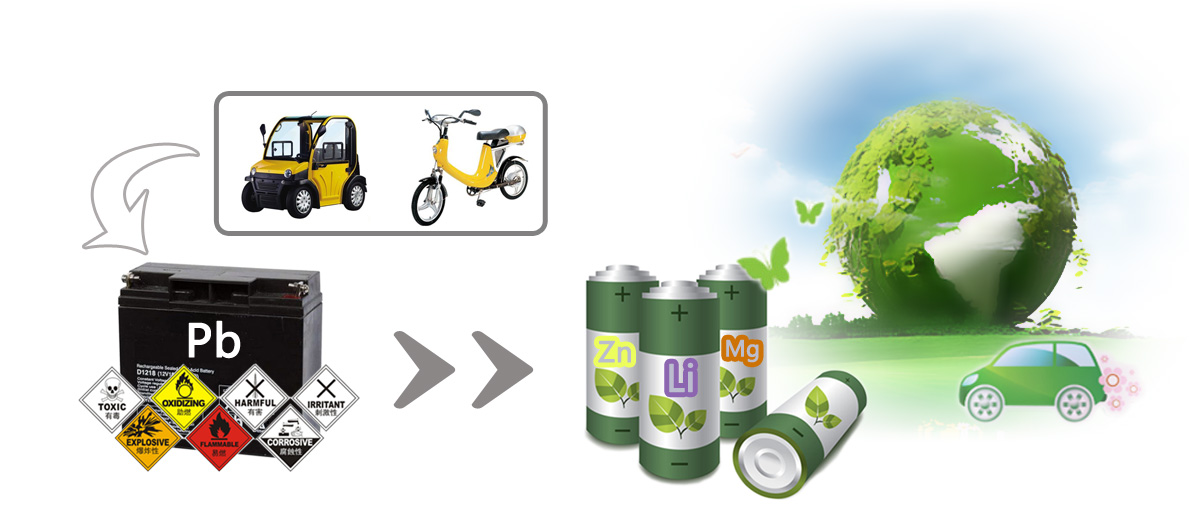
Low-speed electric vehicles with low usage cost have greatly facilitated people’s travel in recent years. Currently, most of low-speed electric vehicles are powered by the lead-acid cells which possess marked advantages in cost. However, lead-acid cells can cause serious environmental pollution. Therefore, development of green and sustainable lead-free low-speed electric vehicle is extremely urgent.
Researchers from Qingdao Institute of Bioenergy and Bioprocess Technology (QIBEBT) of the Chinese Academy of Sciences proposed three promising strategies for lead-free battery systems: low-cost lithium (Li) ion batteries, low-cost aqueous zinc (Zn)-based batteries, and novel magnesium (Mg) battery systems.
Generally, the practical application of lithium-ion batteries was mainly restricted by their high costs. QIBEBT first demonstrated and developed the low-cost and flame-retardant separators based on the cellulose (Electrochimica Acta, 2016, 188: 23), and low-cost carbon anodes based on wasted carbon electrodes and high-quality coal ore (Electrochimica Acta, 2016, 196: 603).
Nowadays, the rechargeable Zn-based batteries suffer from the thermodynamic instability of the Zn metal anode in the aqueous electrolyte. QIBEBT therefore developed a novel strategy of using “water-in-salt” electrolytes based on the extremely high concentrations of organic metal salts to optimize the electrochemical behaviors of Zn anode, successfully addressing the problems of low coulombic efficiency and poor cycling life. By virtue of the “water-in-salt” concept, the energy density of the fabricated Zn-LiMn0.8Fe0.2PO4 could be as high as 183 Wh/kg based on the total active material mass (Electrochemistry Communications, 2016, 69: 6).
The development of high performance rechargeable Mg batteries is severely hindered by the unavailability of well-matched electrolytes. In this regard, QIBEBT has proposed distinct design strategies towards exploring new Mg salts in a specific way of highlighting the implications of anions for the first time. The obtained all-round practical Mg-ion electrolyte met all requirements of easy-synthesis, high ionic conductivity, wide operating potential window, and non-corrosivity (Advanced Energy Materials, DOI: 10.1002/aenm.201602055). QIBEBT also developed a highly conductive and non-corrosive current collector based on a flexible pyrolytic graphitic film (Journal of Materials Chemistry A, 2016, 4: 2277). Based on these novel technologies, the low-cost Mg-S batteries have delivered large energy density up to 900 Wh/kg based on active materials.
The successful development of low cost Li-based technologies, accompanied by the novel Mg and Zn batteries, will be bound to accelerate lead-free progress in the application of low-speed electric vehicles.
Figure 1. Lead-free battery systems for low-speed electric vehicles (Image by QIBEBT)


86-10-68597521 (day)
86-10-68597289 (night)

86-10-68511095 (day)
86-10-68512458 (night)

cas_en@cas.cn

52 Sanlihe Rd., Xicheng District,
Beijing, China (100864)

